Digital Poster
Function 2
ISMRM & ISMRT Annual Meeting & Exhibition • 10-15 May 2025 • Honolulu, Hawai'i

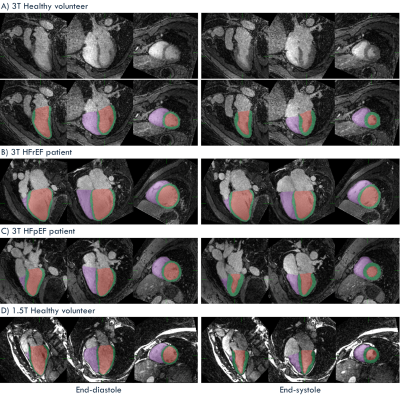 |
Computer Number: 65
1881. Enhancing
Cardiac Functional Assessment with Deep-Learning-based Automatic
Segmentation of Free-Running 4D Whole-Heart MR Images
A. Ogier, S. Baup, G. Ilanjian, A. Touray, A. Rocca, J.
Banus, I. Monton Quesada, M. Nicoletti, J-B Ledoux, J.
Richiardi, R. Holtackers, M. Stuber, R. Hullin, D.
Rotzinger, R. van Heeswijk
Lausanne University Hospital (CHUV) and University of Lausanne (UNIL), Lausanne, Switzerland
Impact: Our DL framework enables automatic, consistent
segmentation of FR cardiac MRI, reducing manual workload and
facilitating quantitative and comprehensive 5D assessments,
supporting broader clinical and research use of advanced
whole-heart imaging.
|
|
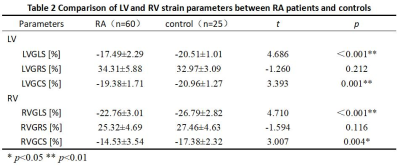 |
Computer Number: 66
1882. Biventricular
Myocardial Strain Assessed by Cardiac Magnetic Resonance Feature
Tracking in Patients with Rheumatoid Arthritis
R. Qi, Y. Liu, J. Jiang, X. Wang, S. Gong, J. Zhang, T. Wang
The Affiliated 2 Hospital of Nantong University, Nantong, China
Impact: CMR-FT is an effective tool for detecting
subclinical cardiac damage in RA patients, with myocardial
strain analysis providing early diagnostic insights that may
support timely therapeutic intervention.
|
|
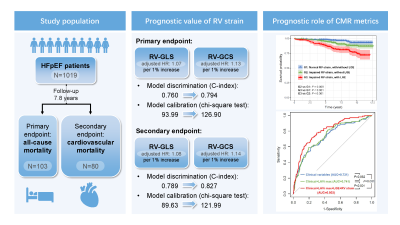 |
Computer Number: 67
1883. Right
Ventricular Function Predicts Outcome in Heart Failure with
Preserved Ejection Fraction: Strain Analysis from MR
Feature-Tracking
L. Zhu, J. He, S. Zhao, M. Lu
Fuwai Hospital, Chinese Academy of Medical Sciences and Peking Union Medical College, Beijing, China
Impact: Incorporating RV strain analysis derived from
CMR-FT into the assessment of patients with HFpEF shows
promise in improving risk stratification and prognostication
beyond traditional risk markers.
|
|
 |
Computer Number: 68
1884. Metabolic
Shifts in Myocardial Recovery Post-CABG Assessed by
Hyperpolarized-13C MRI
G. Sharma, J. Jagtap, S. McNeil, S-H Lin, C. Harrison, J. M.
Park, M. Peltz, C. Malloy, M. Jessen
UT Southwestern Medical Center, Dallas, United States
Impact: HP-13C MRI could guide personalized
postoperative care, providing targeted metabolic insights
that support optimized CAD patient management.
|
|
 |
Computer Number: 69
1885. Circadian
change of cardiovascular function: a cardiovascular magnetic
resonance perspective
Q. Liu, Q. Lu, C. Zhao, C. Zhang, Q. Yang
Beijing Chaoyang Hospital, Beijing, China
Impact: The circadian change of cardiovascular function
could lead to the potential mis-interpretation of patients'
cardiovascular function, understanding and adjusting CMR
results according to examination time could be beneficial
for clinicians.
|
|
 |
Computer Number: 70
1886. Improving
Cardiac motion correction in hybrid PET/MRI using MRI derived
Cardiac Motion Vectors
H. Lim, C. Akincioglu, G. Moran, D. Faul, J. Thiessen, F.
Prato
Lawson Health Research Institute, London, Canada
Impact: The findings of this study will enhance the
efficacy of cardiac motion correction without the need for
additional sequences or hardware, thereby improving patient
care quality and reducing MRI scan time.
|
|
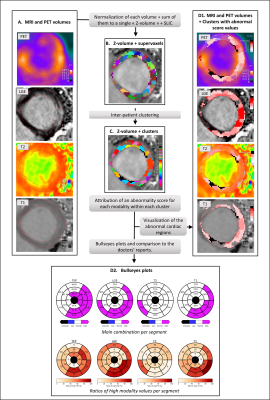 |
Computer Number: 71
1887. A
novel unsupervised machine learning clustering strategy to
identify PET/MR biomarkers in arrhythmogenic cardiomyopathy
B. Ponsi, H. Necib, L. Marteau, A. Monnet, T. Carlier, T.
Eugène, J-M Serfaty, N. Piriou
University Hospital of Nantes, Nantes, France
Impact: A two-step multimodal PET/MR unsupervised
clustering method combining supervoxel extraction and
inter-patient clustering was developed, enabling robust
identification, visualization, and quantification of
abnormal regions in arrhythmogenic cardiomyopathy patients.
It provides an encouraging step toward identifying
prognostic clusters and patient profiles.
|
|
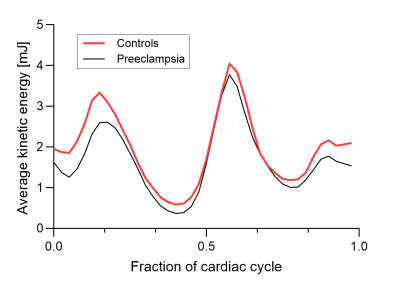 |
Computer Number: 72
1888. Left
ventricular kinetic energy by 4D-flow CMR is unaffected in women
4–7 years after preeclampsia compared to after normotensive
pregnancies
C. Jönsson, K. Pola, C. Edvinsson, S. R. Hansson, P. M.
Arvidsson, K. Steding-Ehrenborg, E. Hedström
Clinical Physiology, Department of Clinical Sciences Lund, Lund University, Lund, Sweden; Department of Clinical Physiology, Skåne University Hospital, Lund, Sweden
Impact: Preeclampsia is a pregnancy complication with
increased risk for cardiovascular disease. This study
demonstrates that kinetic energy analysis of intracardiac
blood flow, suggested as a new imaging biomarker of cardiac
health, has limited clinical value after preeclampsia.
|
|
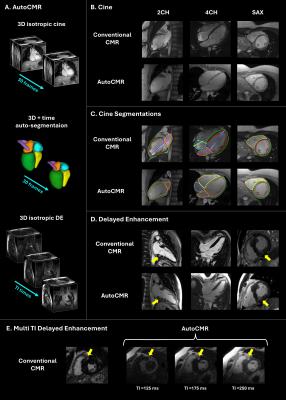 |
Computer Number: 73
1889. AutoCMR:
democratizing access to cardiac MRI with a push-button 4D
isotropic whole thoracic automated exam
D. Kara, A. Deb, H. Le, M. Robakowski, M. Nakashima, T.
Ribeiro Salles Moura, Y. Mao, H. Kohut, K. Bodi, D. Mai, F.
Kanj, Y-L Pak, A. Houston, K. Kohut, M. Darayi, S. Chen, D.
Wee, T. Garrett, W. Tang, M. Bolen, D. Lockwood, S. Jones,
D. Goswami, D. Kwon, D. Chen, C. Nguyen
Cleveland Clinic, Cleveland, United States
Impact: Our 4D isotropic AutoCMR exam enables cardiac
MRI with functional analysis and tissue characterization at
the push of a button, demonstrating potential to improve
access by facilitating cardiac MRI at academic hospitals and
community health centers alike.
|
|
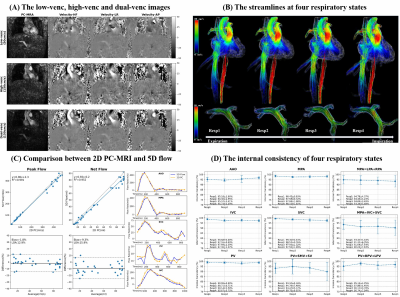 |
Computer Number: 74
1890. Fully
self-gated dual-venc 5D flow MRI for simultaneous imaging of the
cardiovascular and portal venous systems
Y. Ren, W. Ye, W. Yang, W. Liu, H. Hong, J. Hu, J. Zhu, Z.
Zhou, H. Qi, F. Shan, P. Hu
ShanghaiTech University, Shanghai, China
Impact: This technique can simultaneously image the flow
of the cardiovascular and portal venous systems and is
potentially useful to study the cardio-hepatic hemodynamic
interactions for the diagnosis or evaluation of related
diseases.
|
|
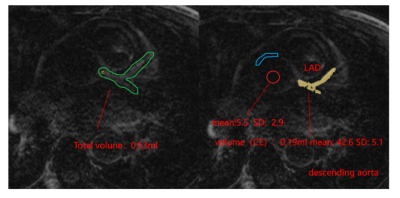 |
Computer Number: 75
1891. Preliminary
study on subclinical coronary artery damage in asymptomatic
people living with HIV based on magnetic resonance vessel wall
imaging
Z. Geng, T. Liu, Y. Wu, Y. Jiang
The First Affiliated Hospital of China Medical University, Shenyang, Liaoning Province, China
Impact: This study highlighted CMR’s ability to detect
early coronary artery damage in asymptomatic PLWH and
emphasized the importance of monitoring cardiovascular
health in this population.
|
|
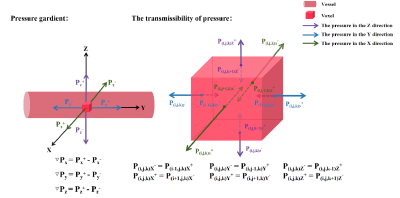 |
Computer Number: 76
1892. Noninvasive
pulmonary arterial pressure measurement based on
acceleration-encoding 4D flow MRI and Navier-Stokes equations
Z. Rong, X. Huang, X. Guan, D. Deng, Z. Liu, H. Liu, Z.
Huang, C. Lei, R. Dharmakumar, H. Zheng, G. Xie
School of Biomedical Engineering, The Sixth Affiliated Hospital, Guangzhou Medical University, Guangzhou, China
Impact: The proposed noninvasive method can be used
to measure mPAP, enabling earlier diagnosis of PH. This
advancement will prompt further research into noninvasive
assessments of other cardiovascular conditions which require
hemodynamic measurements.
|
|
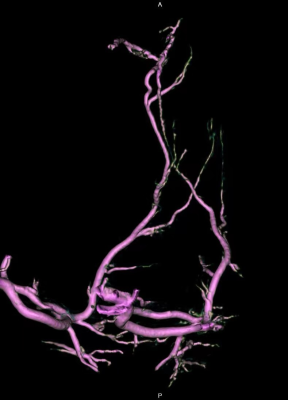 |
Computer Number: 77
1893. Comparison
of Color Doppler Ultrasound and CE-MRA in the Evaluation of
Pudendal Artery Vasculature and Clinical Value Assessment
J. Geng, Y. Qin, L. Liu, G. Xiao, J. Tian, D. Jin, W. Sheng
Xi`an Daxing Hospital, Xi`an, China
Impact: This study demonstrates the feasibility of
CE-MRA for pudendal artery assessment, broadening imaging
options. Its non-invasive nature shows unique advantages in
imaging the sensitive gonadal region and could potentially
replace CTA and CDDU as the preferred preoperative
evaluation method.
|
|
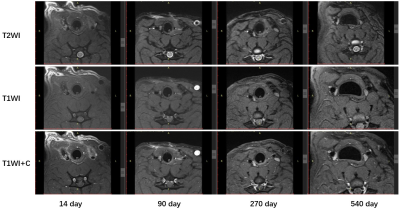 |
Computer Number: 78
1894. Evaluation
of the process of aneurysm embolization after the bioabsorbable
coil: A comparative study of HR-VWI and pathology
B. Tian, Y. Hou, Z. Wang, J. Lu
Changhai hospital of Shanghai, Shanghai, China
Impact: Aneurysm neck, lumen, and surrounding changes on
HR-VWI can reflect the endothelialization, thrombus, and
inflammatory process of aneurysms after coils, making HR-VWI
an efficient tool for monitoring the embolization changes of
aneurysms after bioabsorbable coils.
|
|
 |
Computer Number: 79
1895. Geometry-prescribed
2D-CFD model to analyse left ventricular blood flow under stress
from cycle ergometer CMR.
D. Perie, A. Bedoux, S. Leclaire
Polytechnique Montreal, Montreal, Canada
Impact: Our geometry-prescribed 2D-CFD model, based on
short acquisition time and fully automated, allowed to
extract cardiac hemodynamic forces under stress with high
repeatability. A similar application in patients at risk of
cardiovascular diseases could unravel new biomarkers of
cardiac dysfunction.
|
|
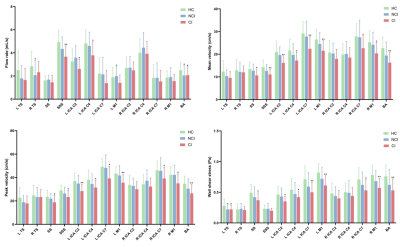 |
Computer Number: 80
1896. Hemodynamic
Changes and their Relationship with White Matter
Hyperintensities in CSVD Patients with Cognitive Impairment: A
4D Flow Study
J. CAO, Q. Song, Y. MIAO
First Affiliated Hospital of Dalian Medical University, Dalian, China
Impact: Our finding helps to identify patients who may
benefit from interventions to improve the functions of the
cerebral circulatory system and provides a potential new
path for clinical treatment.
|
The International Society for Magnetic Resonance in Medicine is accredited by the Accreditation Council for Continuing Medical Education to provide continuing medical education for physicians.